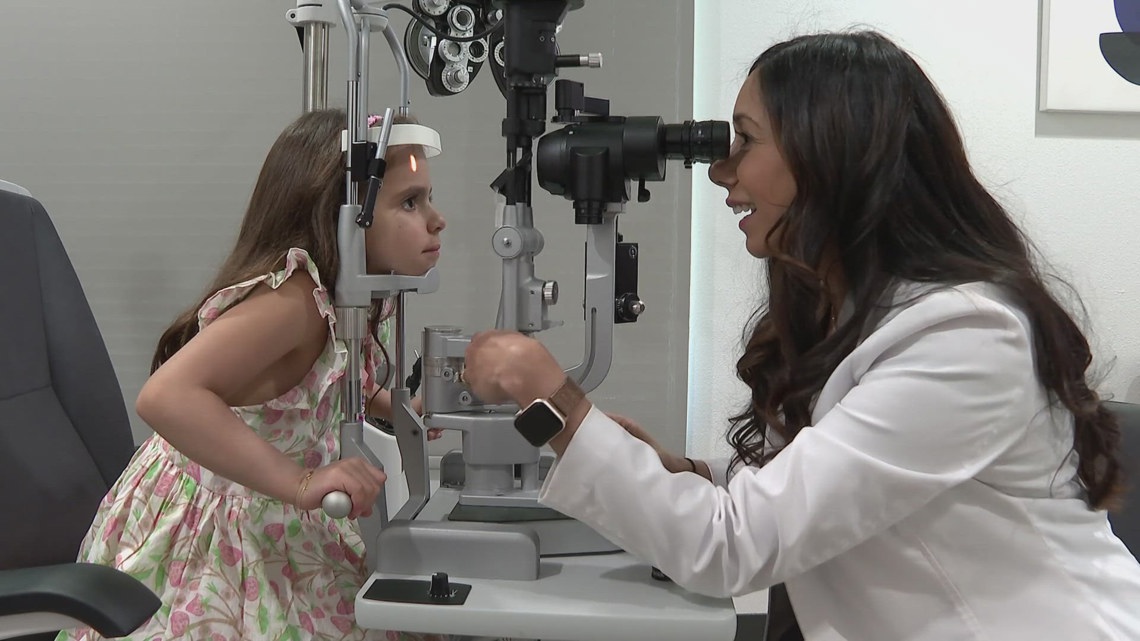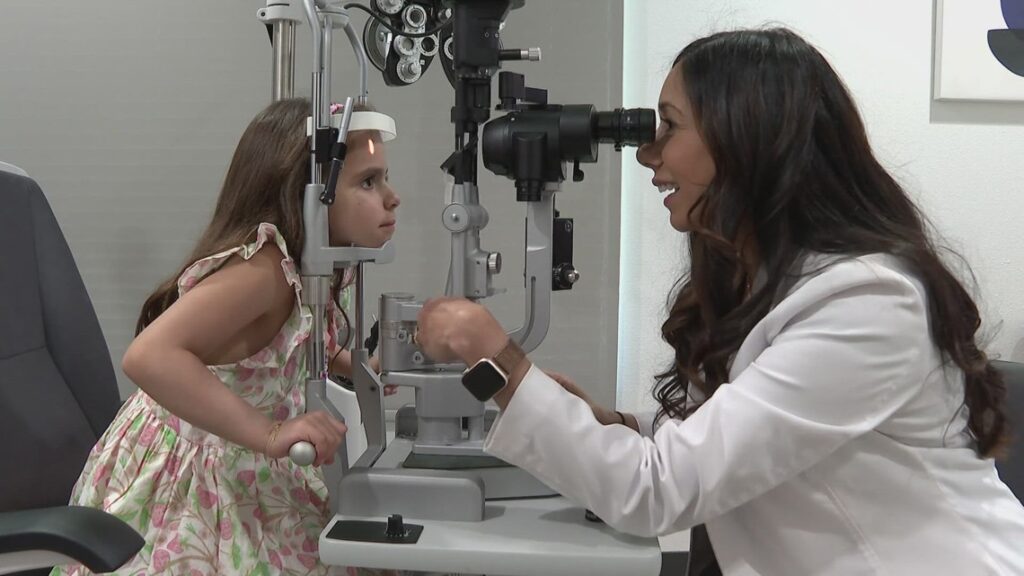
A pediatric optometrist with Children’s Hospital Colorado says nearly every patient she sees is nearsighted and kids are coming in younger than ever.
AURORA, Colo. — Parents, if you see your kid squinting, complaining of headaches or their teacher moves them to the front of the class, it might be time to make an appointment with your eye doctor.
New research published in the British Journal of Ophthalmology shows one in three kids around the world are nearsighted. That number is only expected to grow.
“This is definitely concerning,” said Dr. Melissa Engle, a pediatric optometrist with Children’s Hospital Colorado.
Engle sees kids every day coming into Children’s Hospital Colorado to have their vision checked with many of them being nearsighted.
“Probably almost every other patient I’m seeing,” Engle said. “I’m seeing younger kids now, too, becoming nearsighted as well which is where I get more concerned because that means they’ll probably be a higher prescription later on.”
She said more younger kids are coming into her with nearsightedness with it being more advanced.
“You might be thinking, ‘Why?’ Right? It’s just glasses, no big deal,” Engle said. “But I think the problem that parents don’t realize is that nearsightedness starts around 8 to 10 years old and it’s going to increase every year until about 18 and actually even for some patients into their 20s.”
Beyond that progression, Engle said nearsightedness can bring on other eye health challenges down the road.
“That increases your risk unfortunately for vision threatening concerns, such as retinal detachment [and] myopic maculopathy, which think of that being similar to macular generation, and glaucoma and cataracts,” Engle said.
According to research published in the British Journal of Ophthalmology, the number of kids with myopia or nearsightedness has been rising in recent decades – from 24% in 1990 to almost 36% in 2023. That number is expected to climb higher over the decades, hitting 40% of all kids by 2050.
“We think it’s a mixture. So a mixture between genetics and environmental factors,” Engle said. “If you have one parent or definitely both parents, that’s going to increase your risk for becoming nearsighted. We also know that the Asian [race] has a higher prevalence of becoming nearsighted as well.”
Environmental factors are also creating this challenge for children’s vision.
“Unfortunately, kids just aren’t getting outdoors enough. So we think there is some protective effect against [it] with outdoor time and preventing a kid from becoming nearsighted.”
The constant use of phones, tablets and TVs has made this problem worse.
“I think it’s just because unfortunately, this population right now, it’s just so many more kids again are just not getting off the screens. They’re spending a lot of time on the screens, they’re not getting outdoors enough,” Engle said.
But this is a problem that Engle said can be combatted.
Get your kids outside and moving, ideally for two hours a day. When it comes to screens, try to limit their screen time to two hours a day with trying to break up that screen time to give their eyes a break.
If you’re reading a book or watching something on a tablet or phone, Engle said hold the book or device around 40 centimeters from your face – that’s about the distance from your eye to your elbow.
If your child is already nearsighted, Engle said special eyedrops and contacts can help slow the progression down in kids, which can help protect their vision down the road.
“Get outdoors, try to limit screen time as much as you can and if your kid is already nearsighted, there are things we can do to help slow it down,” Engle said.











More Stories
Images capture exact moment Israeli missile hit building in Beirut
Global warming worsening deadly flooding in Africa, warn scientists
US election: 13 days left — What polls say, what Harris and Trump are up to